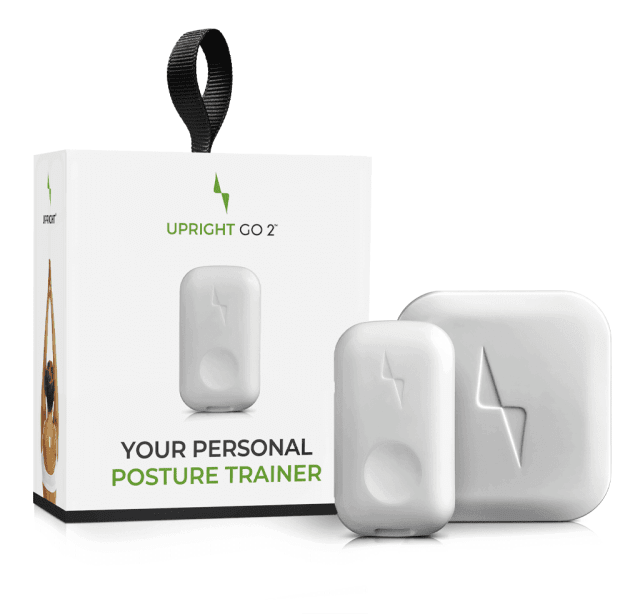Lordosis Exercises: Back Relief & Core Strength
Upright
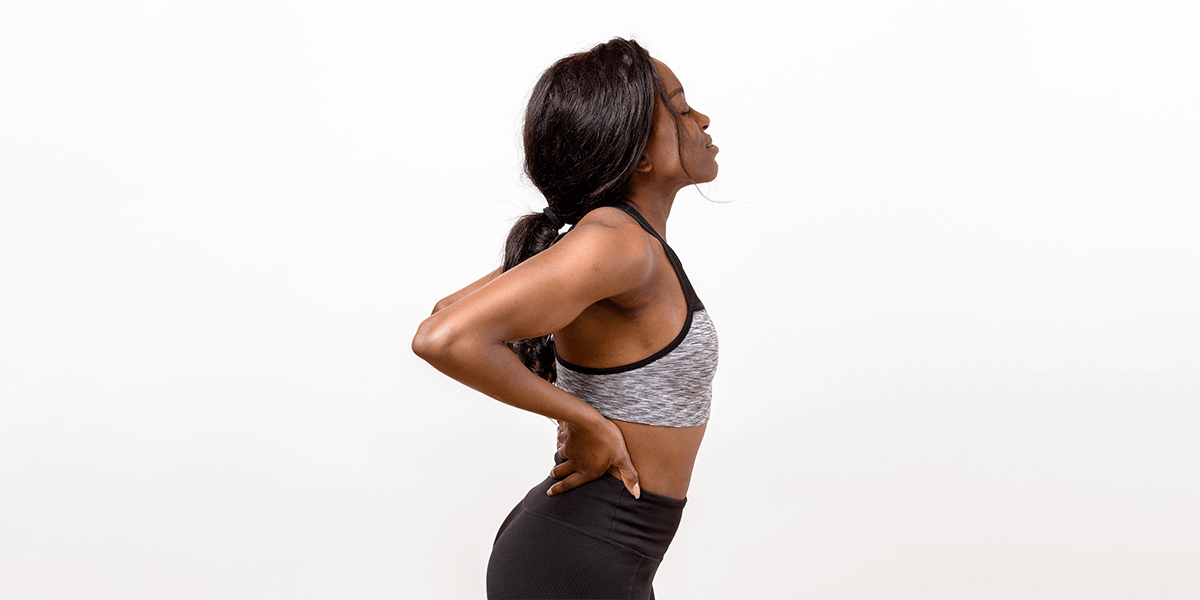
Maintain a healthy, pain-free spine with these core-strengthening lordosis exercises.
Hyperlordosis is an excessive curvature of the lower back, causing the individual afflicted with it to look as though they are sticking their buttocks out. (And not on purpose for TikTok!) The lower spine or lumbar region curves inward, making a C-shape, which can cause discomfort and pain.
What are the symptoms of lordosis?

Hyperlordosis, more commonly known as lordosis, can cause lumbar pain, nerve problems, or damage to the spine and surrounding soft tissue. The more time spent without treatment can force the spine into a deeper curve and aggravate the symptoms. Back problems are particularly sensitive as your lumbar spine supports the majority of the weight of your body. If your lordosis begins to affect your nerves, shooting pains can spread throughout your body.
What causes the condition?
Causes of lordosis include poor posture or a poor pelvic position. An unsupported body position, such as the top of the pelvis tilting forward, causes the muscles surrounding the spine to overcompensate, and the lumbar region begins to gradually move out of place. Obesity puts extra strain on your lower back, due to the excess weight you’re carrying. Other factors may include additional spinal conditions and degenerative joint diseases.
What treatments are available?
Lordosis is difficult to treat as there are slight spinal variances in everyone. If you are experiencing the above symptoms or any discomfort in your lumbar region, it is recommended that you see a trained medical professional. Any excessive curvature should be treated to prevent further damage over time.
There are a number of lordosis exercises that strengthen the glutes, hamstrings, abdominal muscles, and back muscles. Studies have shown that strengthening these muscles can help in realigning your pelvic tilt and decrease lower back pain. Plus, you get all the usual benefits of exercise, such as weight control and improved mental health!
Important note: maintaining proper technique while exercising can ensure an effective workout and prevent injury.
8 of the best lordosis exercises you can do
1. Plank
The world record for the longest plank is 8 hours. Luckily, you don’t need to hold it that long for the exercise to have an effect! In fact, you can go for as little as 10-15 seconds.
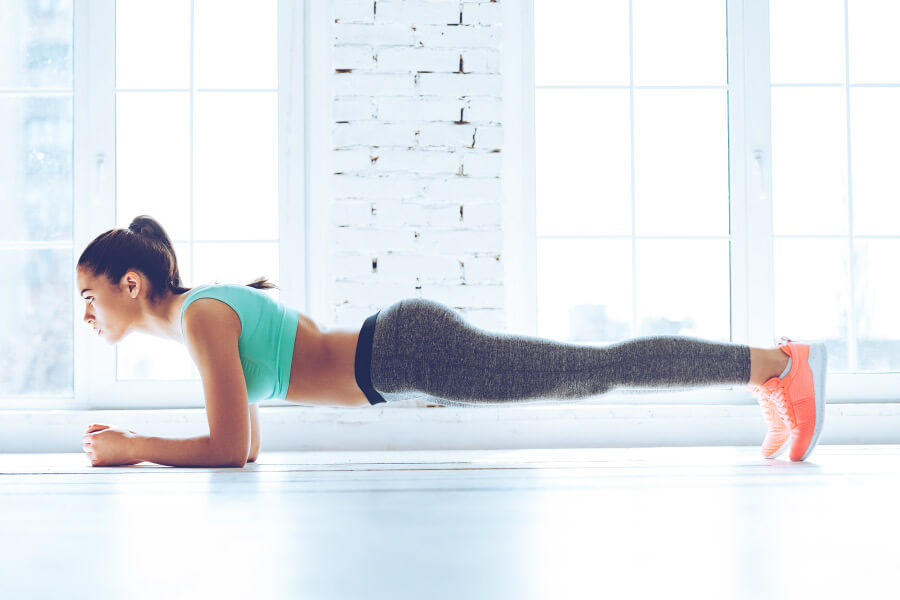
- The plank is similar to a push-up position, but instead of resting on your hands, you rest on your elbows and bring them directly underneath your chest.
- After kneeling, lean forward and place your elbows on the ground directly below your shoulders.
- Lift your knees off of the floor and push your feet back. Ensure your back is straight and keep your neck aligned with the rest of your spine.
- Hold the position and tighten your core muscles for the desired time.
2. Side plank
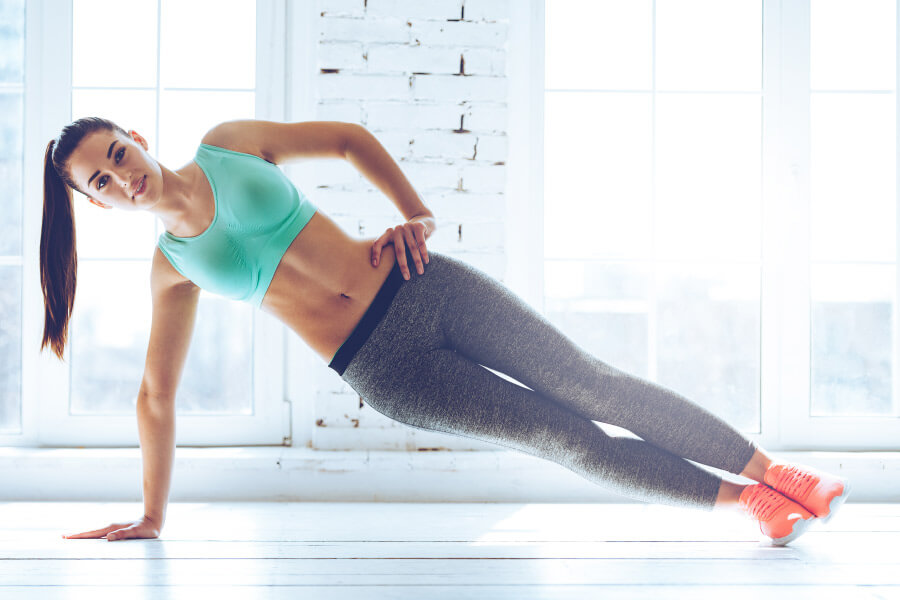
- Just like the original plank, but only balancing on one side.
- Lie on the floor on your side, facing sideways with your feet together.
- Lift up your body until you are supporting yourself with your elbow, directly below your shoulder.
- Raise your hips until your body is in a straight line and tighten your core muscles; your body should create a slant from your shoulders to your feet.
- Hold this position without dropping your hips.
- Repeat on the opposite side.
3. Pelvic tilt with exercise ball
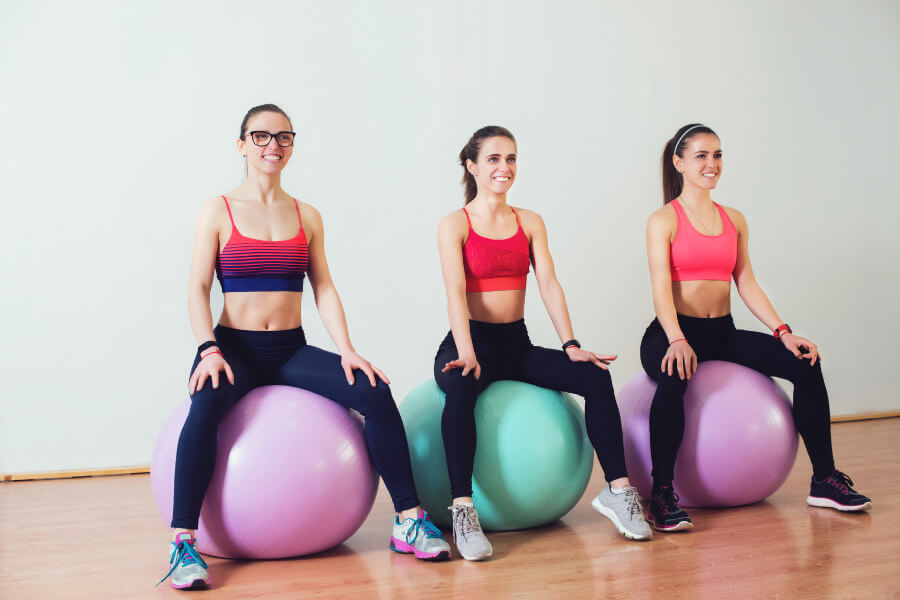
- Sit on a ball that allows your legs to be at a 90-degree angle with your feet flat on the floor.
- Keep your shoulders back and spine straight.
- Tilt your hips forward and flex your abdominals tight.
- Tilt your hips backward as you stick your tailbone out.
- Move back and forth slowly, keeping your shoulders back.
- Repeat 10 times for 3 sets.
4. Superman
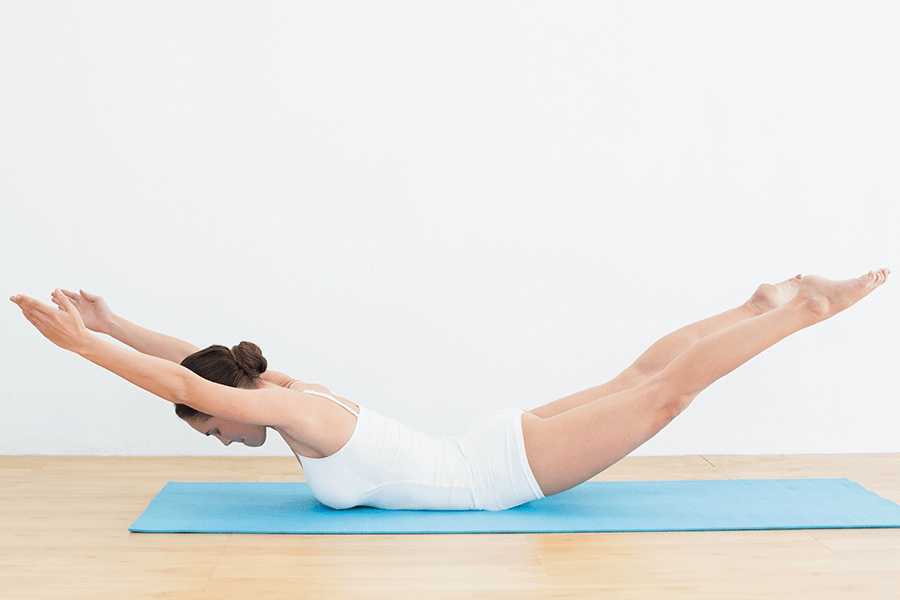
- Lie on your stomach, face down, with your arms out in front of you.
- Lift arms, legs, and chest off the floor simultaneously while keeping your hips grounded.
- Hold for a minimum of two seconds.
- Lower back down slowly.
- Repeat 10 times for 3 sets.
5. Crunches
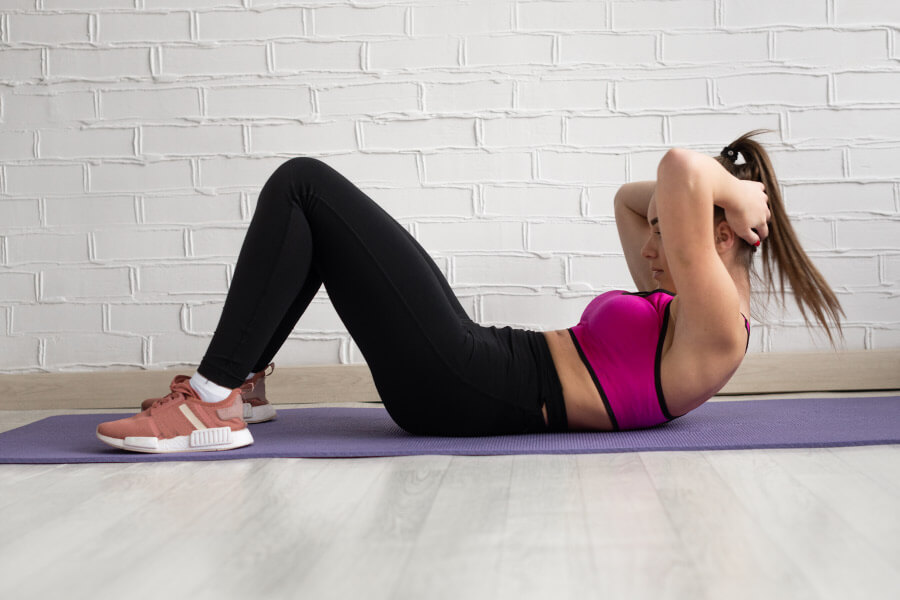
- Lie flat on your back, placing your feet flat on the floor with your legs bent.
- Fold your arms across your chest and lift your torso up until your head, neck, and torso are off the ground.
- Hold for a moment before lowering back down.
- Repeat.
6. Quadruped arm opposite leg raises
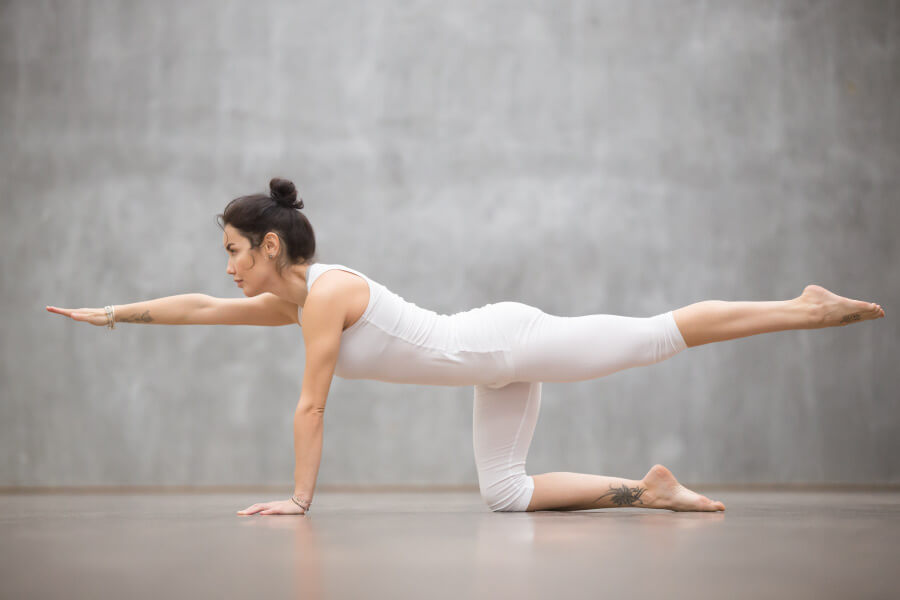
- Kneel on the floor, lean forward, and place your hands palm-down on the floor.
- Make sure your back is straight, your knees are below your hips, and that your palms are directly below your shoulders.
- Raise one arm as you raise the opposite leg until both are aligned straight out from your body, parallel to your spine.
- Slowly lower both your arm and leg until you are back in the starting position.
- Switch arm and leg, and repeat.
7. Dead bug
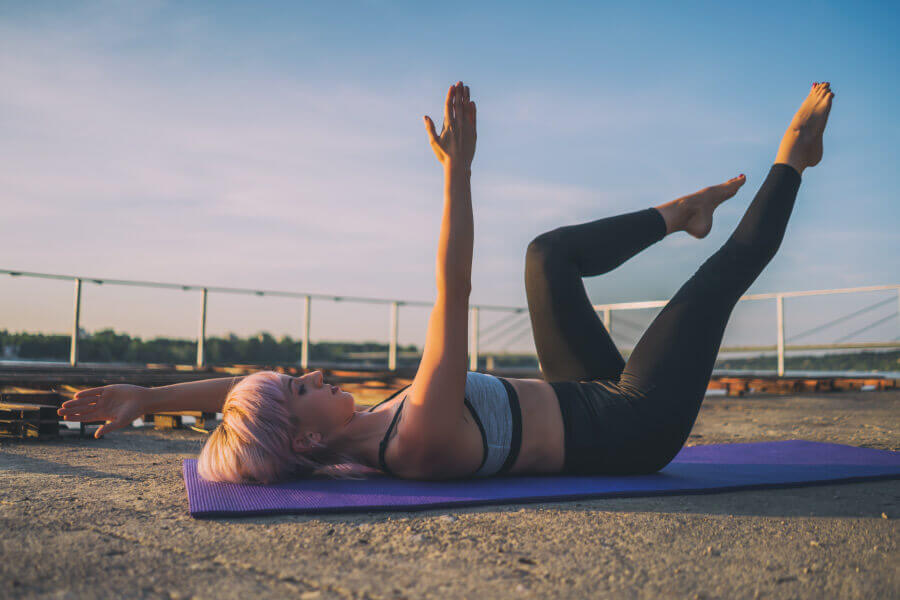
- Lie flat on the floor on your back.
- Lift your arms straight up from your body, reaching through the air.
- Raise one leg until it is at a 90-degree angle from your body.
- Slowly lower until it is in the starting position.
- Switch legs and repeat.
8. Hip bridge
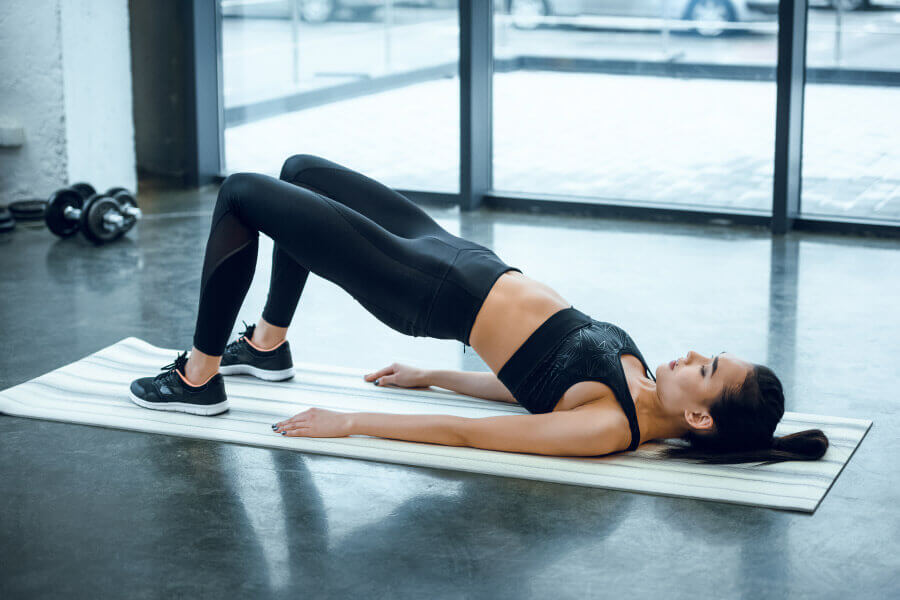
- Lie on your back with your knees bent and raised, your feet flat on the floor, and your arms at your sides.
- Keep your feet hip-distance apart and try to keep your leg in vertical alignment with your knee.
- Flex your glutes and push through your heels to raise your hips upward. Try to make a diagonal line from your shoulders to your knees.
- Hold for a short moment before lowering back down.
- Repeat 10 times for 3 sets.
Before you get into lordosis exercises…
These exercises are intended to improve your core muscles, realign your pelvic tilt, and help with lower back pain. However, more extreme cases of hyperlordosis may require other treatments, such as surgery. If these lordosis exercises aggravate your conditions or cause your pain to increase, stop immediately and seek professional medical advice. Keep track of the severity of the pain and how often it distracts or limits you from performing your daily activities.
Underrated fact: Maintaining good posture is essential to keeping your spine healthy and strong, building up your core muscles, and living a fulfilling life without the constraints of back pain. Take the time to fix your body positions and exercise to build a strong core. The whole purpose of training your posture with the UPRIGHT GO 2 is to help you look and feel better. That means less stress, more mindfulness, strength, and energy so that you can be successful in life.
Read up on the other posture types you should avoid: Forward-Head Posture, Kyphosis, and Sway-Back Posture. Then, see what good posture looks like.
You Might also Like
Search
Sign up to our newsletter
Follow Us On
Popular
Revisit the GO 2/S Device Setup
How to get started
Finding your upright position
How to find your target upright posture
Calibration
Check out the UPRIGHT GO 2
